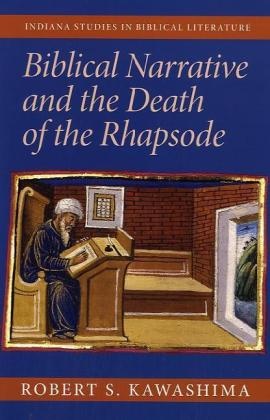Read more
Informationen zum Autor Robert S. Kawashima is Dorot Assistant Professor and Faculty Fellow in the Skirball Department of Hebrew and Judaic Studies at New York University. Klappentext Informed by literary theory and Homeric scholarship as well as biblical studies, Biblical Narrative and the Death of the Rhapsode sheds new light on the Hebrew Bible and, more generally, on the possibilities of narrative form. Robert S. Kawashima compares the narratives of the Hebrew Bible with Homeric and Ugaritic epic in order to account for the "novelty" of biblical prose narrative. Long before Herodotus or Homer, Israelite writers practiced an innovative narrative art, which anticipated the modern novelist's craft. Though their work is undeniably linked to the linguistic tradition of the Ugaritic narrative poems, there are substantive differences between the bodies of work. Kawashima views biblical narrative as the result of a specifically written verbal art that we should counterpose to the oral-traditional art of epic. Beyond this strictly historical thesis, the study has theoretical implications for the study of narrative, literature, and oral tradition. Indiana Studies in Biblical Literature-Herbert Marks, General Editor Zusammenfassung An analysis of the novelty of biblical prose narrative and its break with oral traditions. Inhaltsverzeichnis Acknowledgments Abbreviations 1. Introduction: The Novelty of Biblical Narrative 2. From Song to Story: The Genesis of Narrative in Judges 4 and 5 3. Narration and Discourse: The Linguistic Dualism of Biblical Narrative and Its Literary Consequences 4. Represented Consciousness in Biblical Narrative 5. Biblical Time and Epic Time: From Grammar to Narrative Technique 6. The Art of Biblical Narrative as Technique: Making Strange the Tradition 7. Conclusion: Toward an Archaeology of Ancient Israelite Knowledge Notes Bibliography Index ...

